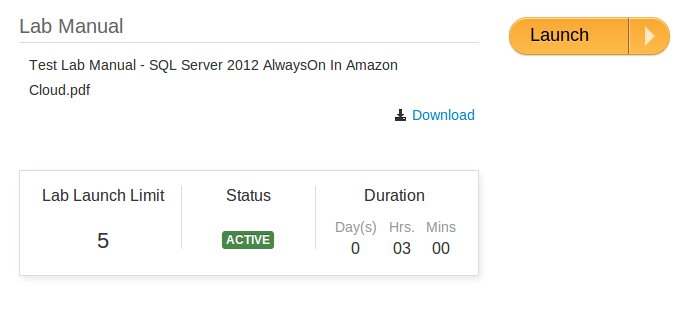AWS Test Drive - Amazon's Sandbox
 Not so long ago, AWS Amazon introduced a service called AWS Test Drive. I was lucky, as part of the joint program of AWS Amazon and our company, I was able to get to know this service better and try out its functionality. First I want to briefly tell you what it is and why it is needed.
Not so long ago, AWS Amazon introduced a service called AWS Test Drive. I was lucky, as part of the joint program of AWS Amazon and our company, I was able to get to know this service better and try out its functionality. First I want to briefly tell you what it is and why it is needed. What it is?
In fact, this is a set of ready-made technical solutions from Amazon partners, made in the form of laboratory work.
Each laboratory work contains a brief description of its purpose, a text-by-step manual step-by-step, a video lesson and, of course, Cloud Formation Template, which must do the bulk of the work.
For each laboratory work there is a limit on time and number of launches.
Which is quite logical, because as an AWS Test Drive user, resources are provided free of charge.
Test labs from Oracle, Microsoft, SAP, Redhat, Alfresco, Trend micro, Infor, Sophos and F5 are now available.






')
Unfortunately, not all test labs are open for public use. For example, when I tried to register with the RedHat test lab, I was told that registration with gmail was “RedListed”.
But you can easily register with Microsoft from the lab and try out, for example, the SQL Server AlwaysOn solution (for example, SQL Server 2012, deployed across two Data Centers). and validate various failover scenarios)
After registration and login see the following picture:

Click "Try it now!" And get into the menu of the laboratory itself, where we can already directly start creating the environment or download documentation about this laboratory work.

Who needs it?
Yes, in principle, to any representative of the IT sphere related to the development, testing or administration.
This is a great chance to try out software products and technical solutions from leading developers of the industry absolutely free of charge and at the same time gain new knowledge in the field of system administration and system architecture.
For example, as part of a lab from Oracle, you can familiarize yourself with “Oracle Database Disaster Recovery”.
As part of our affiliate program, I prepared a lab to deploy MongoDB in replication mode.
If readers are interested, in my next article I can talk about the very process of creating a laboratory work.
Source: https://habr.com/ru/post/209236/
All Articles